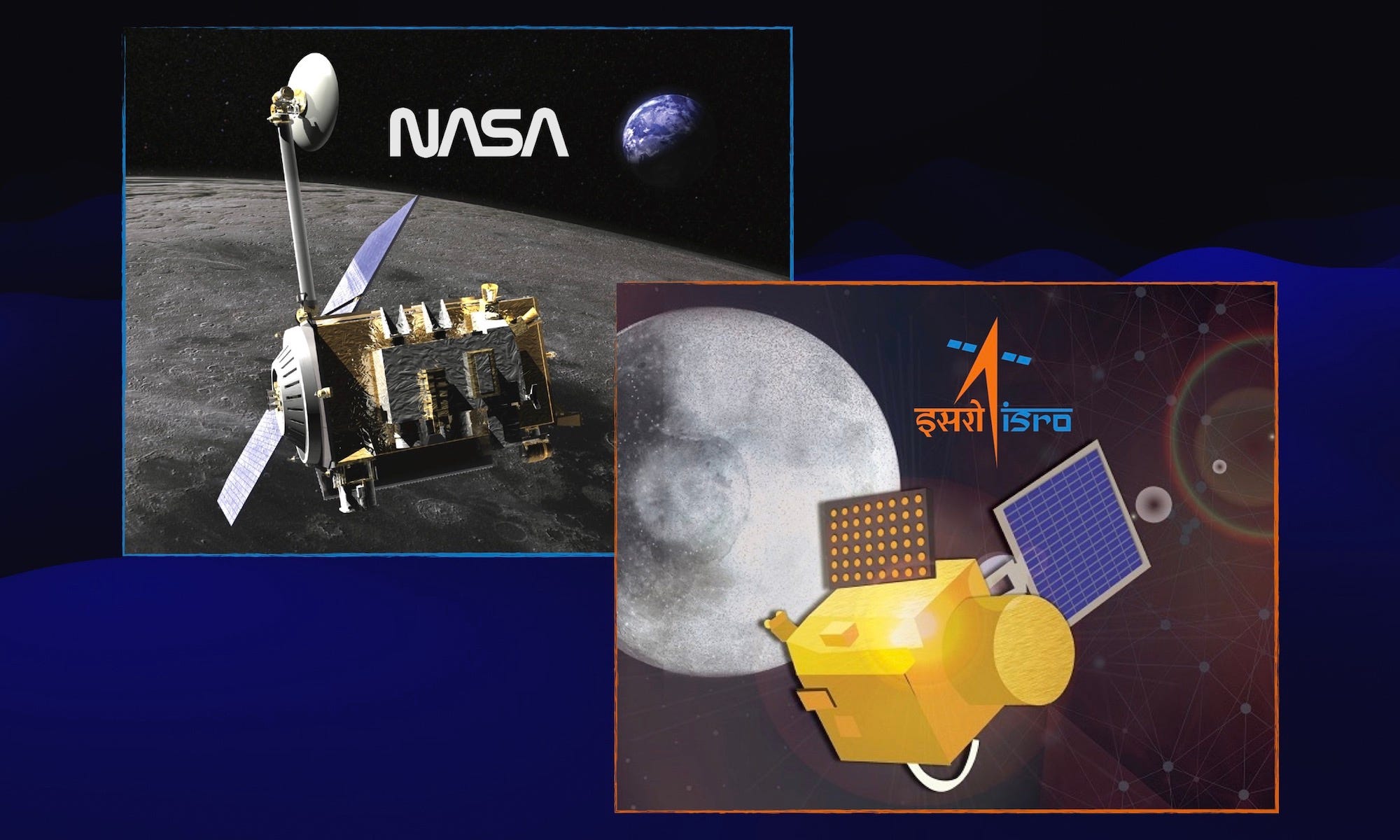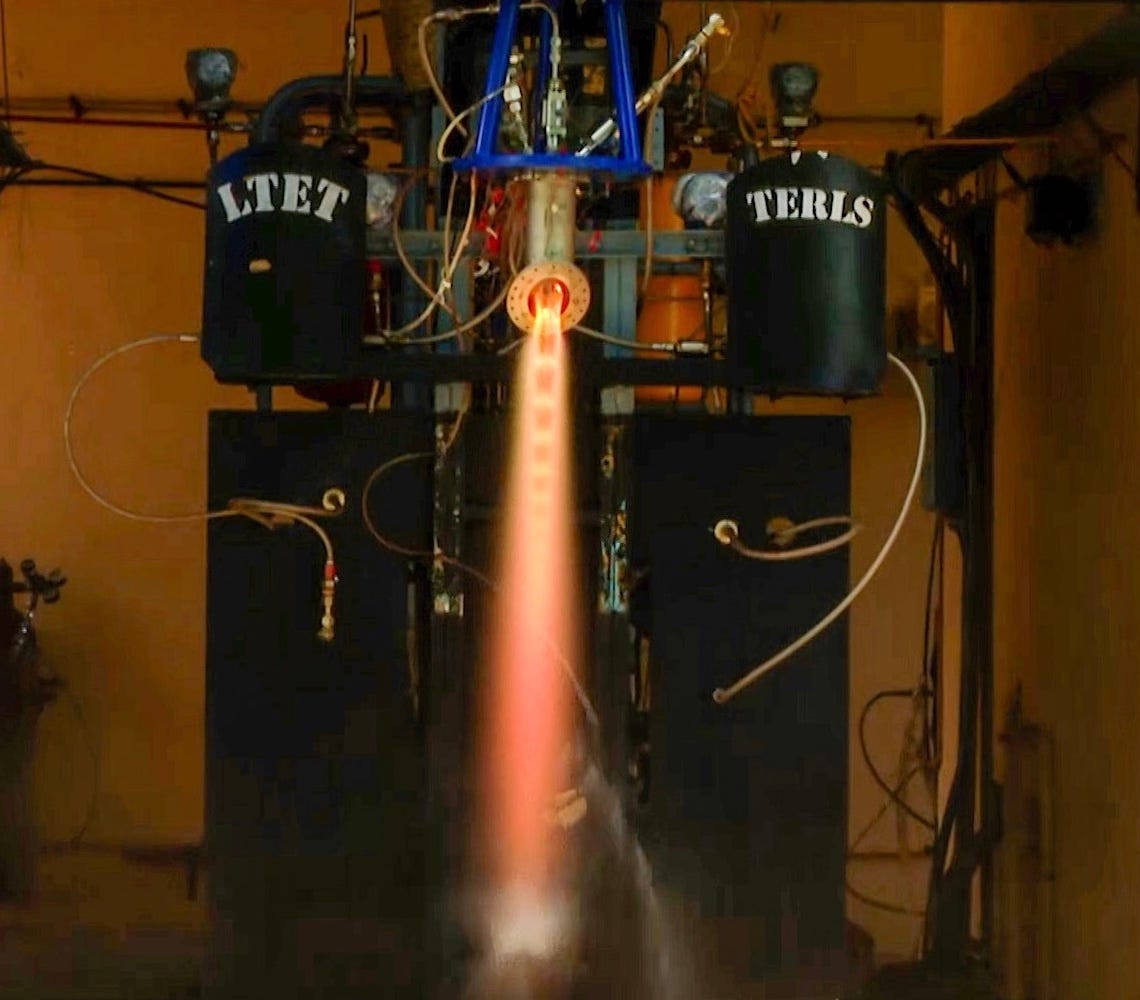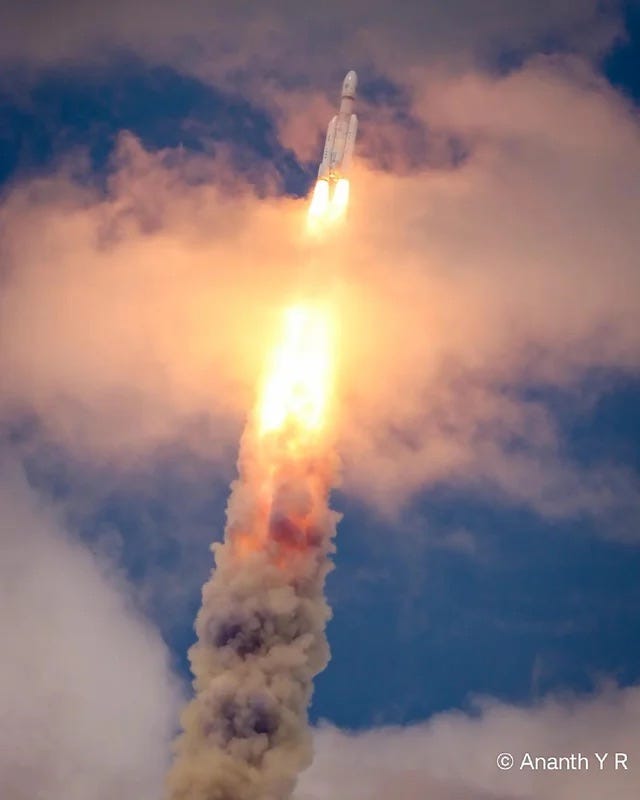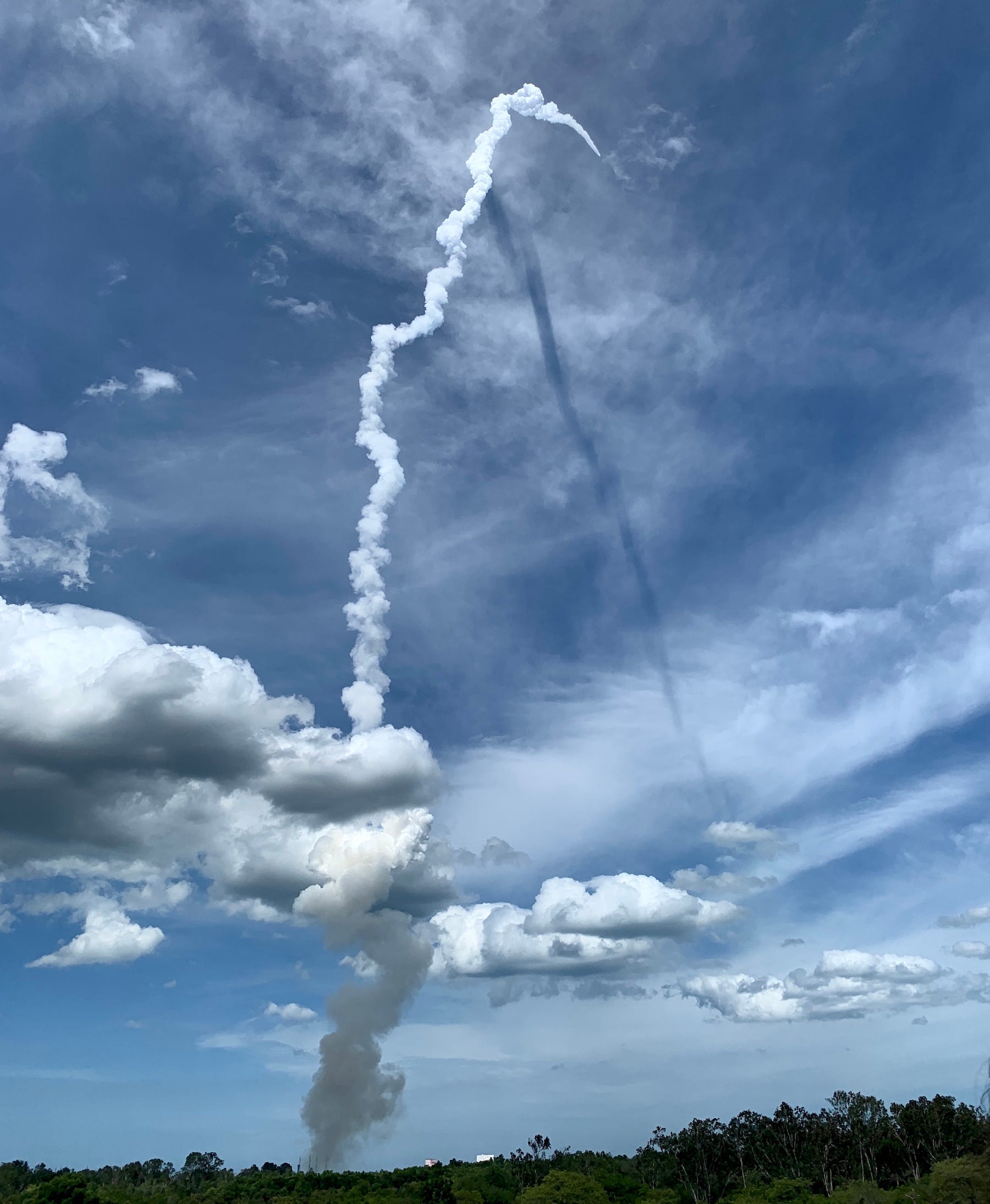Indian Space Progress #6: Chandrayaan 3 launches for the Moon as India signs the Artemis Accords and expands the scope of Gaganyaan

On July 14, Friday at 14:35 IST (09:05 UTC), ISRO launched the Chandrayaan 3 spacecraft for its second Moon landing attempt. Chandrayaan 3’s Project Director P. Veeramuthuvel said in a post-launch briefing that the GSLV Mk III rocket injected the spacecraft close to the ideal intended orbit of 170 x 36,500 kilometers. He added that both the lander and its connected propulsion module are generating power nominally. A graceful touchdown by the lander on August 23 would make India only the fourth country in the world to achieve the feat, following the USSR, the US, and China. My article on the mission discusses its scientific details, its global relevance, and critical importance to India in anchoring a long-term role in shaping lunar exploration and governance. Read the piece:
In an interview with ANI, ISRO Chief S. Somanath explained that the Chandrayaan 2 Moon lander failed due to two major reasons. Its five main engines were firing at a slightly greater thrust than expected, which accumulated navigation errors over time. As a result, at some point the parameters related to these errors surpassed the bounds against which the onboard software was designed and tested. Combined with the built-in requirement that the lander must only target a tight landing ellipse of 500 by 500 meters—despite it being a non-nominal scenario—the lander ended up increasing its velocity while descending and thus crashed on the Moon. Somanath later explained that all of these issues have been resolved for Chandrayaan 3.
India signs the Artemis Accords to shoot for the Moon

As part of an unprecedented set of broad-sweeping agreements between the US and India centered around collaborative science & technology advancements, India signed the Artemis Accords on June 21. Notably, India is one of the few nations with independent and frequent access to space joining to shape this US-led lunar governance framework, which aims to peacefully manage increasing global activity at the Moon. In a feature story, I highlight and contextualize its biggest implications and opportunities for NASA and ISRO to better explore our Moon:
Many thanks to the Takshashila Institution and SkyServe for sponsoring this month’s Indian Space Progress report.
The growing scope of Gaganyaan
The White House factsheet on the new India-US agreements builds upon the previous, recent partnership forged in January for “critical and emerging technologies” by furthering human spaceflight cooperation between the two nations:
NASA will provide advanced training to ISRO astronauts with the goal of launching a joint effort to the International Space Station in 2024. Additionally, NASA and the ISRO are developing a strategic framework for human spaceflight cooperation by the end of 2023.
ISRO Chief S. Somanath told The Indian Express that NASA’s training of Indian astronauts will help ISRO better design and tweak hardware for its own crewed Gaganyaan missions. The ambitious inaugural Gaganyaan flight to indigenously send humans to space is currently targeting a 2025 launch. ISRO has completed human-rating the GSLV Mk III, which is the country’s most powerful rocket and the vehicle of choice for launching astronauts.
Within just the last month, both NASA and private US companies have shown interest in leveraging parts of Gaganyaan’s technology stack:
- Blue Origin is keen on using the Mk III for launching crew capsules to service its upcoming commercial space station called Orbital Reef, Chethan Kumar reports.
- Bhavya Lal, NASA’s associate administrator for technology, policy, and strategy told PTI expressed zeal for this very kind of possibility. “I’m most excited about India’s human space flight program because once India has a presence in low earth orbit, we can take cargo to each other’s stations. We can take the crew to each other.” Relatedly, Somanath confirmed recently that Mk III cargo missions to the International Space Station or any other compatible station—docking-wise—are possible in the future.
- Voyager Space announced that it’s considering using ISRO’s Gaganyaan crewed spacecraft to service the upcoming Starlab commercial space station for which it has partnered with Lockheed Martin and Airbus.
Private and commercial space updates

- On June 12, a SpaceX Falcon 9 Transporter flight launched Ahmedabad-based Azista BST’s first satellite called AFR. The 80-kilogram satellite is the first of up to five Earth imagers the company hopes to operate within three years. Long-term, the company hopes to leverage its avant-garde 50,000 sq. ft facility to mass produce eight satellites a month to provide commercial offerings to agricultural, strategic, and analytics customers in South-East Asia.
- Bengaluru-based Digantara announced on June 20 having raised $10 million primarily to make satellites forming the world’s first space-based system to track objects in Earth orbit. It will advance the company’s commercial space situational awareness offering, which collates and analyzes available data of numerous existing satellites. Digantara is also building a ground-based optical observatory in India dedicated to space situational awareness.
- IN-SPACe, which is an Indian Department of Space (DOS) entity created to promote space activities” of private players, has put out an Expression of Interest to transfer the technology of ISRO’s new SSLV rocket to the private industry. This move is notable since SSLV is set to enter the cut-throat smallsat market with a lower target price and quicker turnaround than Rocket Lab’s Electron. NSIL, a DOS company commercializing Indian space technologies, aims to offer as many as ten SSLV launches a year by 2026.
- Skyroot, which launched suborbital test mission Prarambh last November and became India’s first privately developed such rocket, is progressing towards an orbital launch of its Vikram-I rocket. On July 4, the company announced completing the carbon-fiber winding and curing of the rocket’s Stage-1 motor case. On June 21, Skyroot flight qualified the Raman-I engine, which will provide roll attitude control for Vikram-I.
More Indian space
- With the Aditya-L1 solar observatory’s final instrument delivered to ISRO early June, the agency is now targeting the space telescope’s launch by August end. The delivered instrument is the Solar Ultraviolet Imaging Telescope, or SUIT, which will provide continuous full disc observations of the Sun’s “surface”—aka the photosphere—as well as its inner atmosphere called the chromosphere.
- On July 1, ISRO conducted the first hot fire test on its indigenous 2000 kiloNewton kerolox engine. The test was prematurely terminated at 2.0 seconds due to an unanticipated spike in the turbine pressure. ISRO is now analyzing the issue before it can proceed with the intended series of long duration tests of the engine. The test took place at a new facility dedicated for testing semi-cryogenic engines to be used on ISRO’s future rockets. The agency plans to replace the existing two Vikas engines powering the GSLV Mk III’s core stage with one kerolox engine to increase the rocket’s GTO payload capacity to ~6,000 kilograms from 4,000. Variants or derivatives of this semi-cryogenic engine will also power parts of India’s upcoming heavy-lift and reusable launch vehicle respectively.
- Popular Indian YouTuber Gareeb Scientist has a great interview with ISRO Chief S. Somanath discussing a whole range of finer things related to Chandrayaan 3 as well as the Indian space program and its future at large. Gareeb Scientist usually does videos in Hindi to benefit the Indian demographic but this one is in English for accessibility by a broader global audience.
- Chandrayaan 3 mission trivia, tidbits, and reading menu
Feeling the Chandrayaan 3 launch
I was thrilled to be at Sriharikota to watch Chandrayaan 3 blast off for the Moon. Feeling the rumblings caused by the rocket was epic. I witnessed the liftoff and ascent from the public Launch View Gallery, which was packed with well over 5,000 spectators and from where people have captured really cool imagery.


